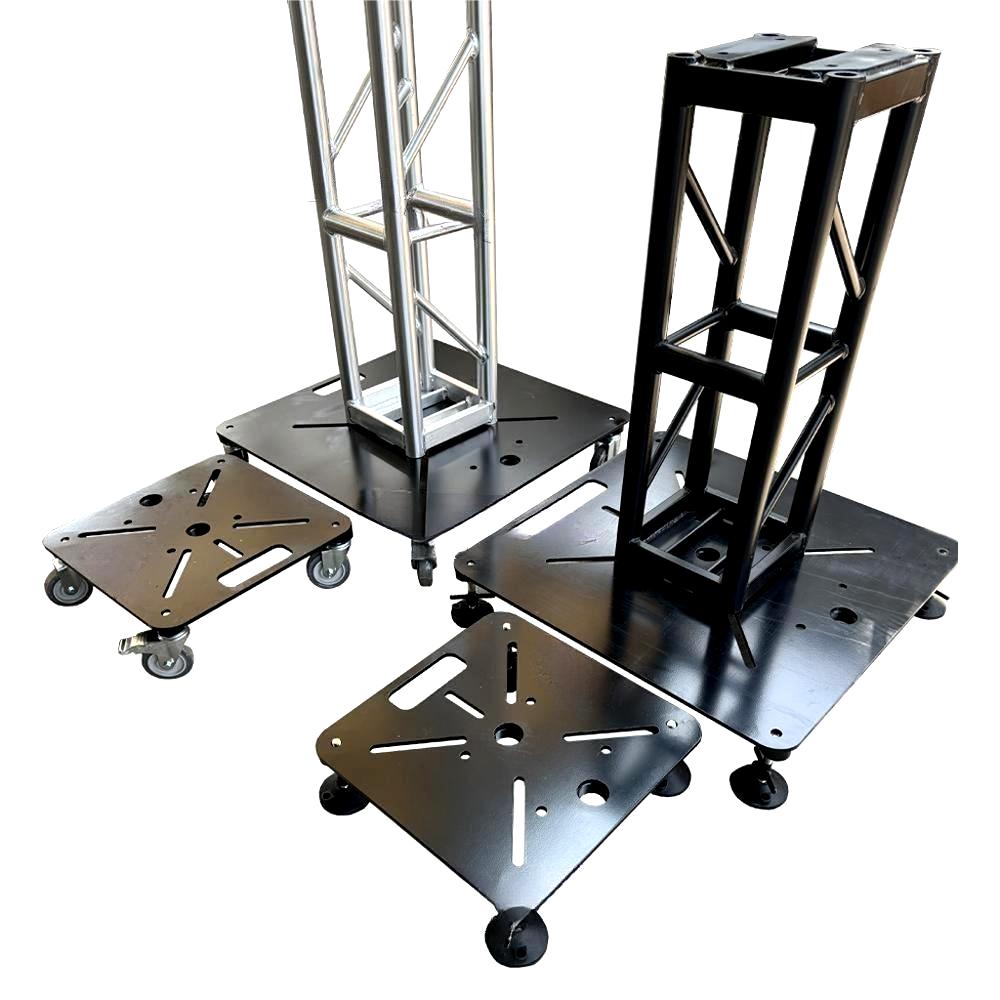What Are You Looking For?
The design and implementation of truss base plates play a crucial role in the safe and effective use of Tomas bolted box trussing with wheels. By carefully considering the load distribution, stability, adjustability, material selection, and installation procedures, engineers and builders can ensure the structural integrity and functionality of their truss systems.

Material Selection:
Strength: The base plate material should possess sufficient strength to resist bending and deformation under load. Steel is a common choice due to its high strength-to-weight ratio.
Durability: The material should be resistant to corrosion and wear, especially if the structure is exposed to outdoor elements. Stainless steel or galvanized steel are suitable options for such applications.
Weight: The weight of the base plate should be considered, particularly for mobile structures. Lighter materials, such as aluminum, can be advantageous in these cases.
Installation Procedures:
Surface Preparation: The surface where the base plate will be installed should be level and free of debris. This ensures proper load distribution and stability.
Fixing: The base plate is typically fixed to the supporting surface using bolts or anchors. The type and size of fixings should be chosen based on the load requirements and the material of the base plate and supporting surface.
Leveling: Once installed, the base plate should be leveled to ensure the proper alignment of the truss structure. Adjustable base plates facilitate this process.
